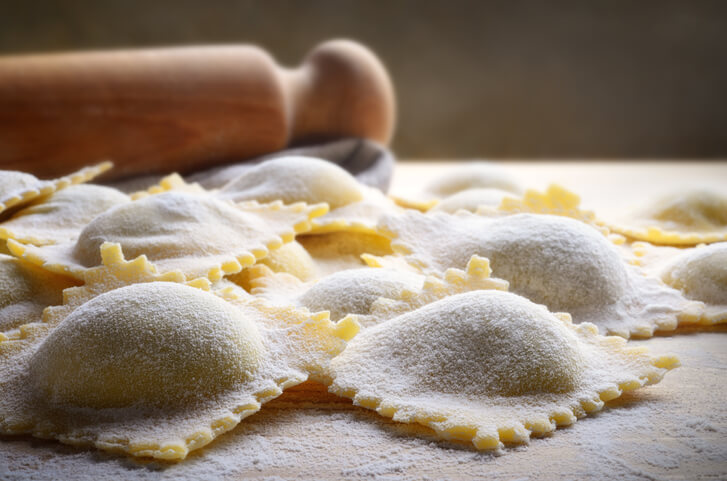Whoever Invented Ravioli Is a Genius
When ravioli is on the tip of your fork, you may not be thinking about its history. Your mind is likely filled with other things (like cheese, meat, or vegetables, for example). But ravioli is a dish with a vast history, and like many Italian cuisines, they’re a labor of love.
So how did the humble ravioli begin? And how did it end up on a plate at Spizzico Italian Kitchen? The path it took may surprise you… and leave you a little bit hungry.
The History of Ravioli
Ravioli came into the conversation as far back as 14th century Italy. (Dumplings have been around even longer, you know.) Italian merchant Francesco di Marco Datini mentioned them in his letters, although he is not considered the inventor of the dish. There were even talks of ravioli in Late Medieval England, where a cookbook for serving King Richard the Second described the dish as “rauioles.”
While the origins of ravioli are not clear, the name comes from the Italian word riavvolgere, which means “to wrap.” That makes sense when you really examine your ravioli (hard to do instead of eating it, we know) and observe that the cheese is tucked into a thin layer of dough before it’s bathed in sauce.
Although an Italian may not have invented filled pasta, Italians were (maybe) the first to pair it with tomatoes. However, ravioli didn’t start its lifelong love affair with tomato sauce until 1548, when the delicious fruit (as Italians call it, the Pomodoro) touched down in Italy.
How Ravioli Is Made
We divide the ravioli name into three categories. There’s the classic version, a square with wavy edges and any fillings you could think of. Then there’s her bigger sister raviolo, which is a single and larger ravioli with larger treats inside to match. And we can’t forget little agnolotti, which is made with a dip to hold whatever sauce you choose to pair it with.
No matter which sibling you choose to make, the process is fairly similar. It starts with a sheet of pasta dough rolled thin. Chefs mold the ravioli shape and fill it with meat, vegetables, or cheeses… or all three! Once they’re done with that, they place another thin sheet on top of the dough.
At this point, chefs typically pull out a specialized cutter to separate the completed ravioli from the dough. Then the pasta is boiled to completion and ready to dive in a delectable pool of sauce!
The Community of Cuisine
There are ways to make your own ravioli, complete with from-scratch dough that’s sure to thrill (and FILL). It’s an extensive process you ought to use as an opportunity to connect with loved ones. But maybe you don’t have the time, tools, or ingredients to make your own. Perhaps all you want is a restaurant meal with home-cooked charm and something you can share with your family or enjoy on your own.
 At Spizzico, we understand the value of community and that it’s important now more than ever. The world has changed drastically in a manner of years. Sadly, it still isn’t safe to gather everyone you know and love to celebrate life and everything it brings.
At Spizzico, we understand the value of community and that it’s important now more than ever. The world has changed drastically in a manner of years. Sadly, it still isn’t safe to gather everyone you know and love to celebrate life and everything it brings.
While some may feel like there’s nothing you can rely on for sure, the Arnold area can always turn to us for a fresh and delicious Italian meal. Our menu has all aspects of Italian cuisine, including meat sauce, tradizionali, and gorgonzola ravioli.
Ravioli has come a long way in the last many centuries. We may not know where exactly it comes from, but it’s here right now. So come to Spizzico Italian Kitchen, where you can taste the past, present, and future in a single bite.
Share